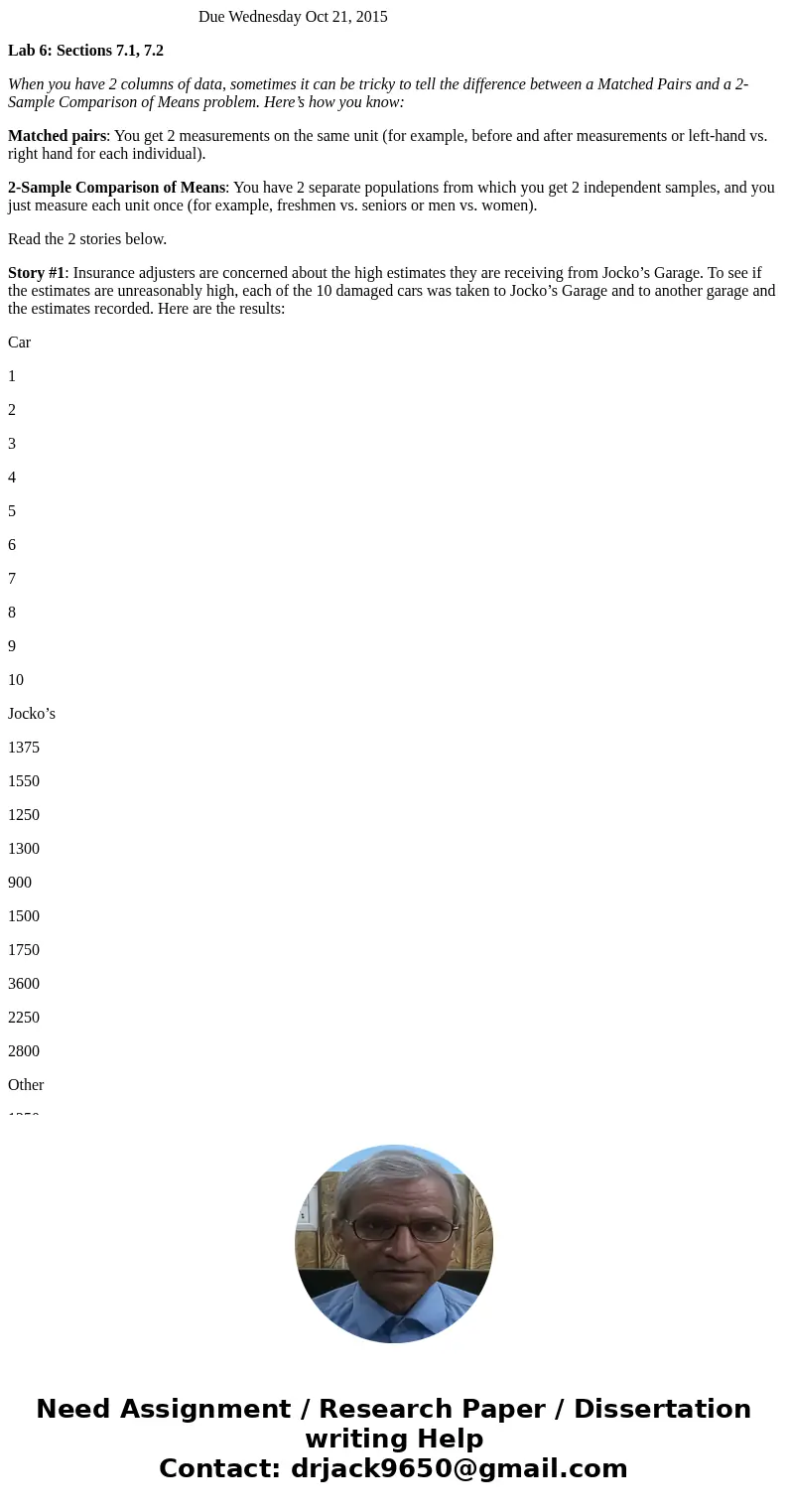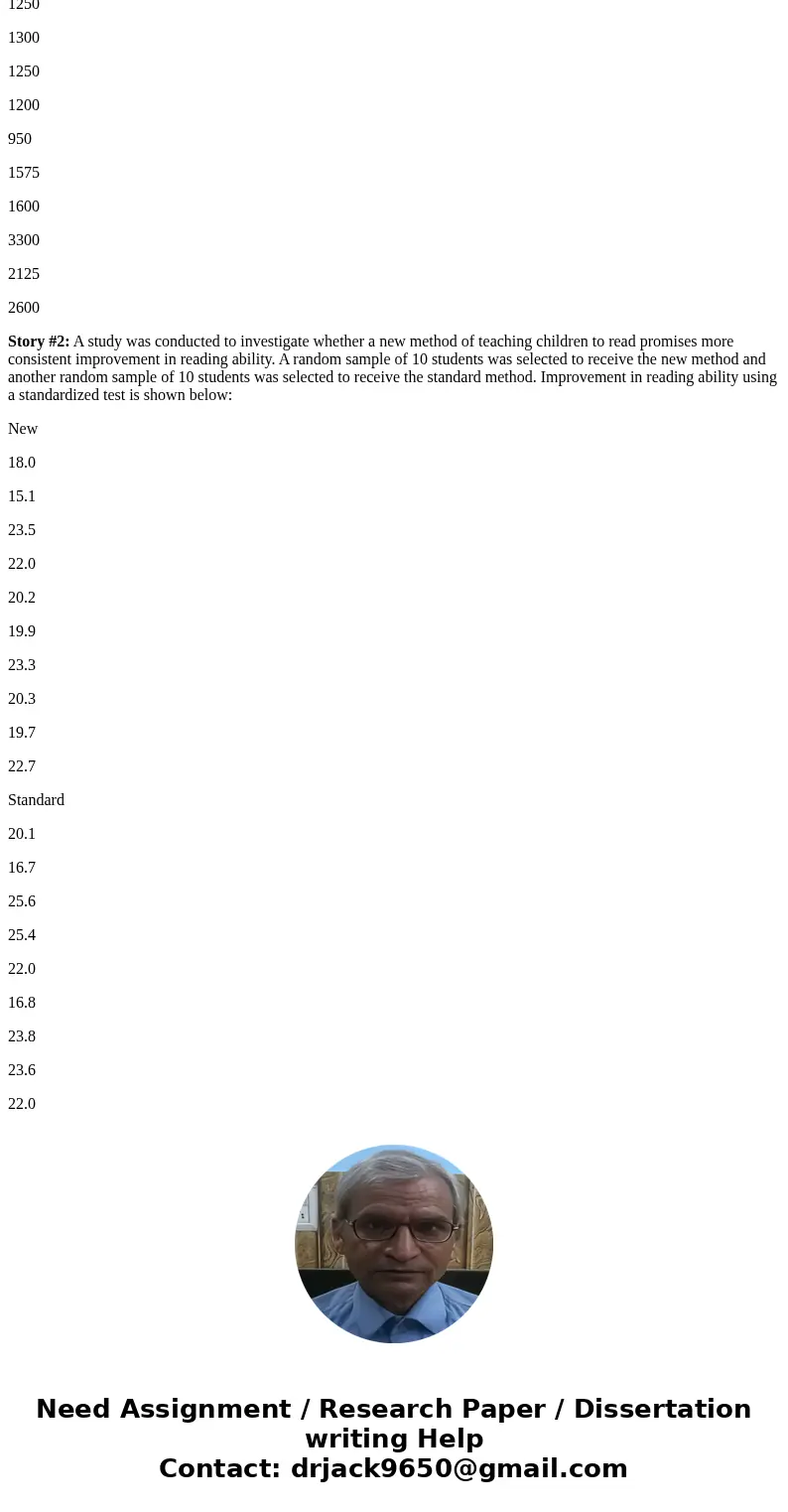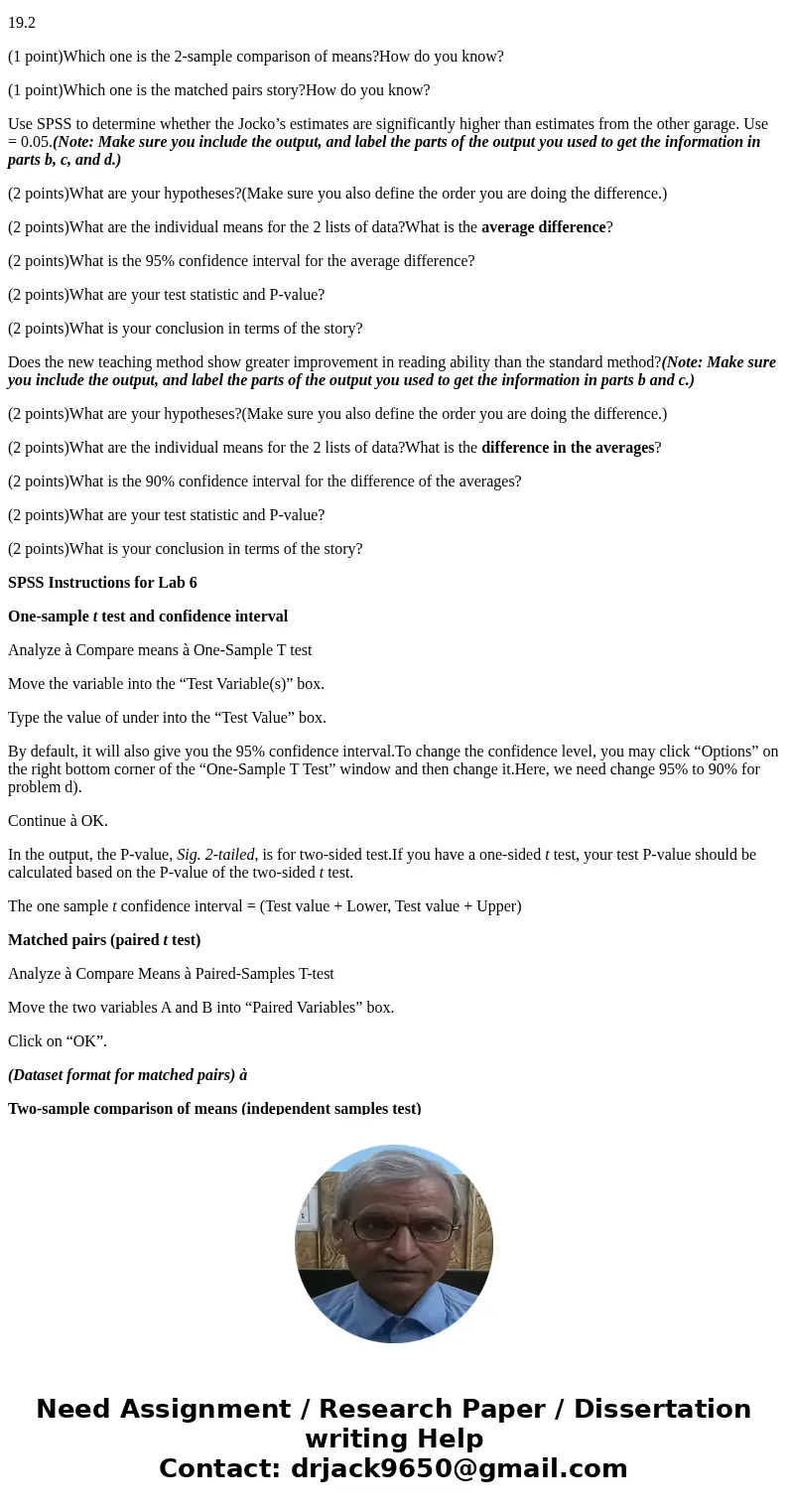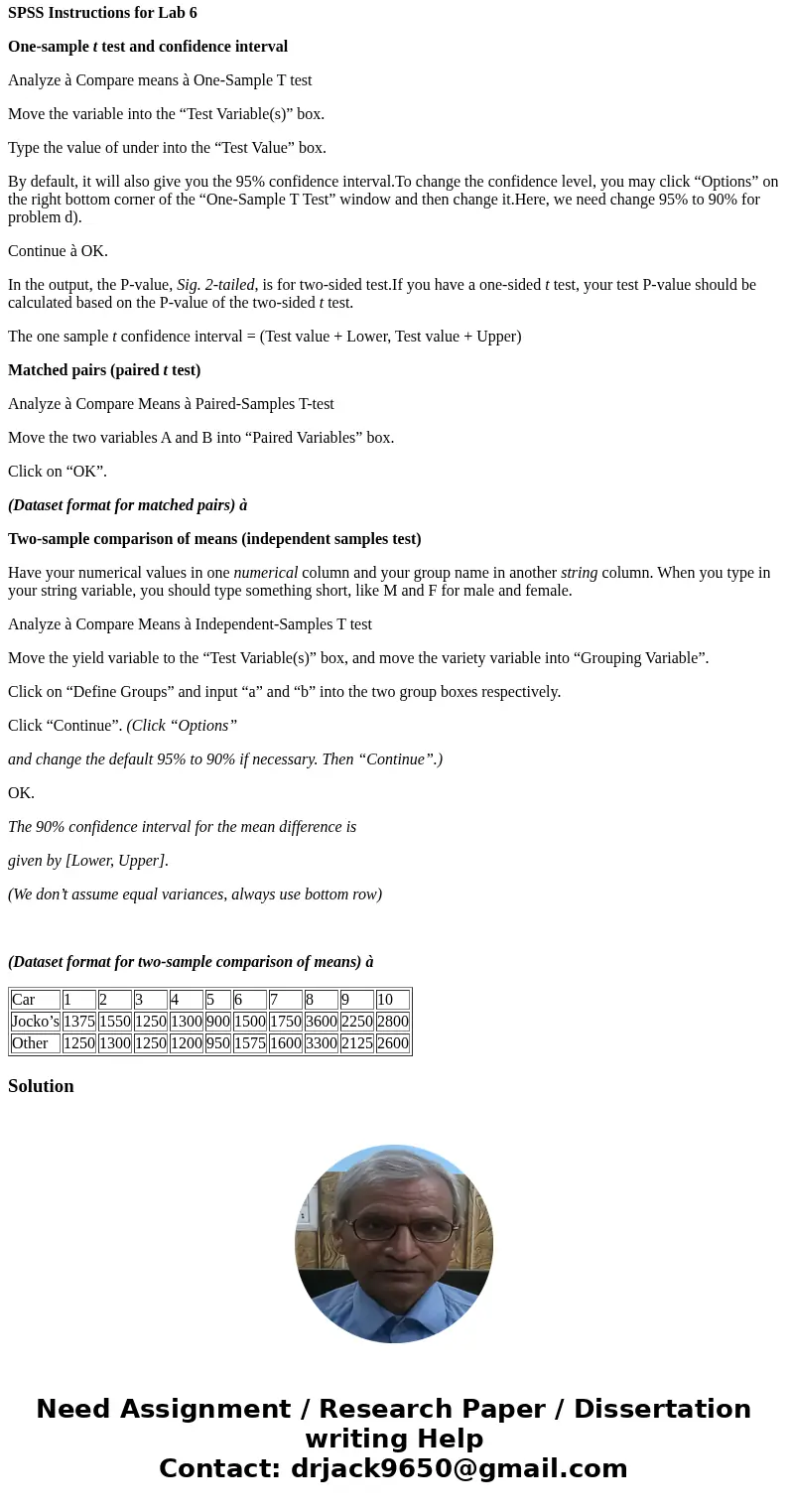Due Wednesday Oct 21 2015 Lab 6 Sections 71 72 When you have
Due Wednesday Oct 21, 2015
Lab 6: Sections 7.1, 7.2
When you have 2 columns of data, sometimes it can be tricky to tell the difference between a Matched Pairs and a 2-Sample Comparison of Means problem. Here’s how you know:
Matched pairs: You get 2 measurements on the same unit (for example, before and after measurements or left-hand vs. right hand for each individual).
2-Sample Comparison of Means: You have 2 separate populations from which you get 2 independent samples, and you just measure each unit once (for example, freshmen vs. seniors or men vs. women).
Read the 2 stories below.
Story #1: Insurance adjusters are concerned about the high estimates they are receiving from Jocko’s Garage. To see if the estimates are unreasonably high, each of the 10 damaged cars was taken to Jocko’s Garage and to another garage and the estimates recorded. Here are the results:
Car
1
2
3
4
5
6
7
8
9
10
Jocko’s
1375
1550
1250
1300
900
1500
1750
3600
2250
2800
Other
1250
1300
1250
1200
950
1575
1600
3300
2125
2600
Story #2: A study was conducted to investigate whether a new method of teaching children to read promises more consistent improvement in reading ability. A random sample of 10 students was selected to receive the new method and another random sample of 10 students was selected to receive the standard method. Improvement in reading ability using a standardized test is shown below:
New
18.0
15.1
23.5
22.0
20.2
19.9
23.3
20.3
19.7
22.7
Standard
20.1
16.7
25.6
25.4
22.0
16.8
23.8
23.6
22.0
19.2
(1 point)Which one is the 2-sample comparison of means?How do you know?
(1 point)Which one is the matched pairs story?How do you know?
Use SPSS to determine whether the Jocko’s estimates are significantly higher than estimates from the other garage. Use = 0.05.(Note: Make sure you include the output, and label the parts of the output you used to get the information in parts b, c, and d.)
(2 points)What are your hypotheses?(Make sure you also define the order you are doing the difference.)
(2 points)What are the individual means for the 2 lists of data?What is the average difference?
(2 points)What is the 95% confidence interval for the average difference?
(2 points)What are your test statistic and P-value?
(2 points)What is your conclusion in terms of the story?
Does the new teaching method show greater improvement in reading ability than the standard method?(Note: Make sure you include the output, and label the parts of the output you used to get the information in parts b and c.)
(2 points)What are your hypotheses?(Make sure you also define the order you are doing the difference.)
(2 points)What are the individual means for the 2 lists of data?What is the difference in the averages?
(2 points)What is the 90% confidence interval for the difference of the averages?
(2 points)What are your test statistic and P-value?
(2 points)What is your conclusion in terms of the story?
SPSS Instructions for Lab 6
One-sample t test and confidence interval
Analyze à Compare means à One-Sample T test
Move the variable into the “Test Variable(s)” box.
Type the value of under into the “Test Value” box.
By default, it will also give you the 95% confidence interval.To change the confidence level, you may click “Options” on the right bottom corner of the “One-Sample T Test” window and then change it.Here, we need change 95% to 90% for problem d).
Continue à OK.
In the output, the P-value, Sig. 2-tailed, is for two-sided test.If you have a one-sided t test, your test P-value should be calculated based on the P-value of the two-sided t test.
The one sample t confidence interval = (Test value + Lower, Test value + Upper)
Matched pairs (paired t test)
Analyze à Compare Means à Paired-Samples T-test
Move the two variables A and B into “Paired Variables” box.
Click on “OK”.
(Dataset format for matched pairs) à
Two-sample comparison of means (independent samples test)
Have your numerical values in one numerical column and your group name in another string column. When you type in your string variable, you should type something short, like M and F for male and female.
Analyze à Compare Means à Independent-Samples T test
Move the yield variable to the “Test Variable(s)” box, and move the variety variable into “Grouping Variable”.
Click on “Define Groups” and input “a” and “b” into the two group boxes respectively.
Click “Continue”. (Click “Options”
and change the default 95% to 90% if necessary. Then “Continue”.)
OK.
The 90% confidence interval for the mean difference is
given by [Lower, Upper].
(We don’t assume equal variances, always use bottom row)
(Dataset format for two-sample comparison of means) à
| Car | 1 | 2 | 3 | 4 | 5 | 6 | 7 | 8 | 9 | 10 |
| Jocko’s | 1375 | 1550 | 1250 | 1300 | 900 | 1500 | 1750 | 3600 | 2250 | 2800 |
| Other | 1250 | 1300 | 1250 | 1200 | 950 | 1575 | 1600 | 3300 | 2125 | 2600 |
Solution




 Homework Sourse
Homework Sourse